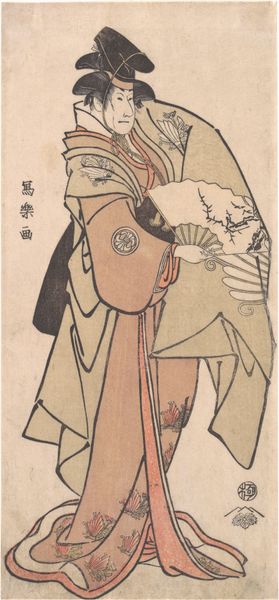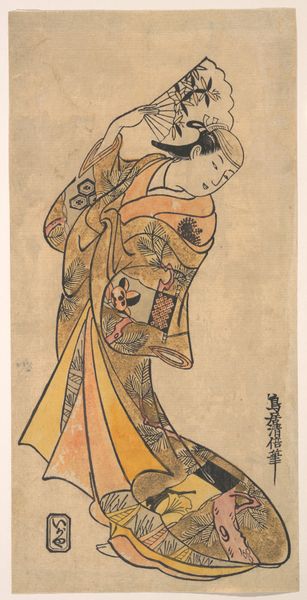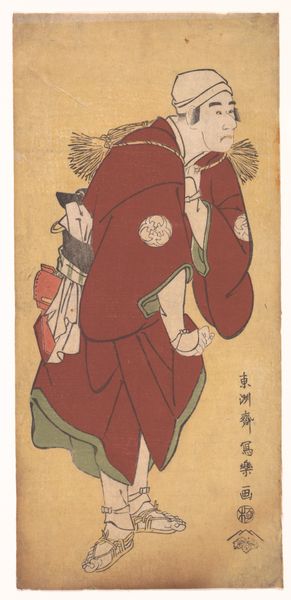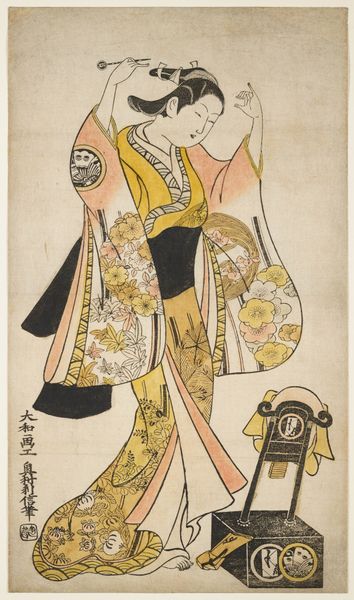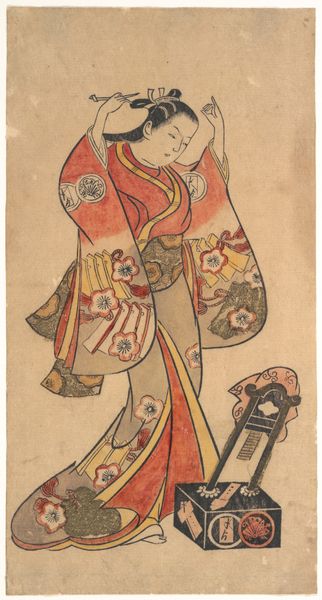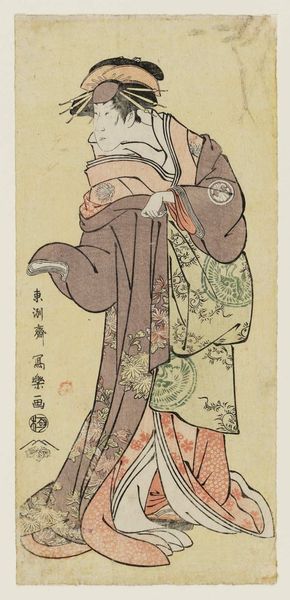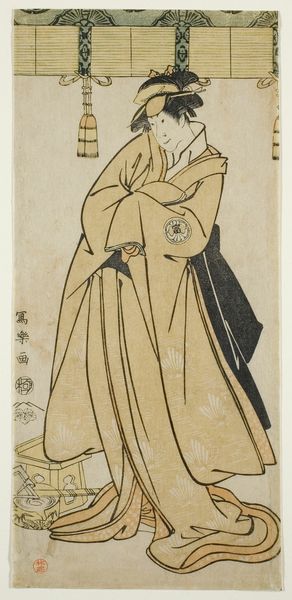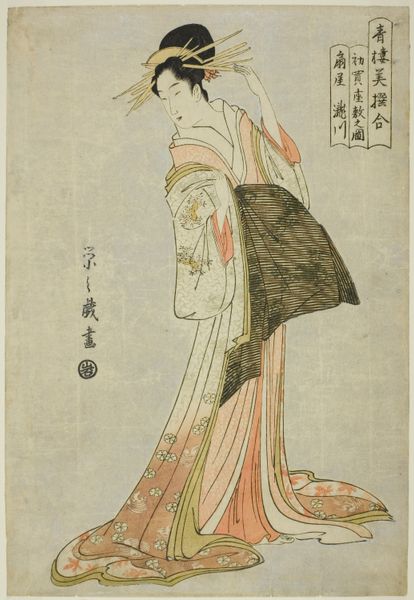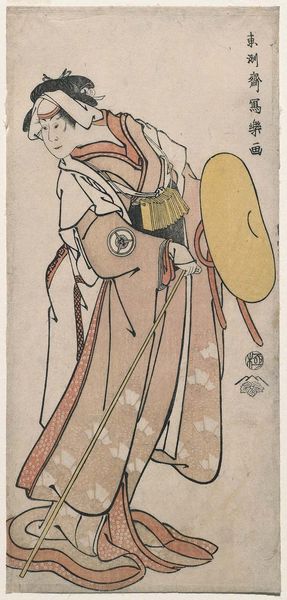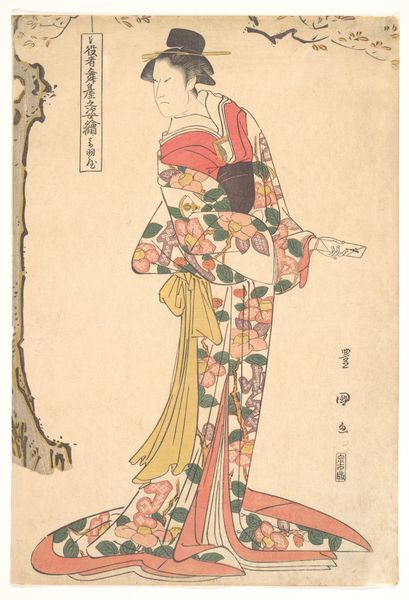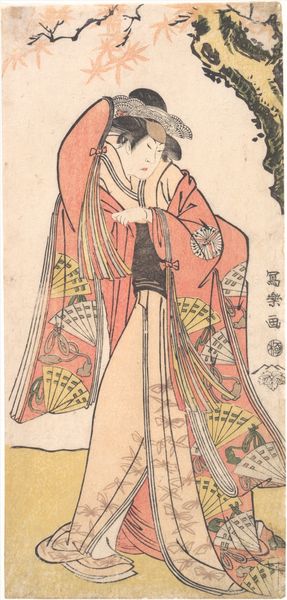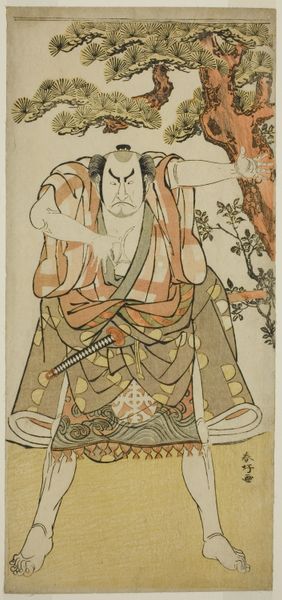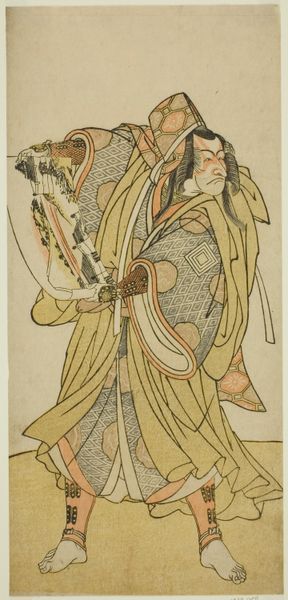
print, woodblock-print
#
portrait
# print
#
asian-art
#
ukiyo-e
#
japan
#
figuration
#
woodblock-print
Dimensions: 30.4 × 14.6 cm
Copyright: Public Domain
Curator: Let's discuss this fascinating woodblock print, "The Actor Iwai Hanshiro IV as Otoma," crafted around 1794 by Tōshūsai Sharaku. It now resides at The Art Institute of Chicago. Editor: It’s immediately striking, isn’t it? The lean lines, the controlled palette. It's almost… skeletal in its refinement, with that single point perspective suggested by the staff. Curator: Indeed. Sharaku's prints were groundbreaking for their portrayal of Kabuki actors. What you observe is quite accurate, reflecting ukiyo-e’s departure from earlier, more idealized depictions. He captures a particular tension and human realism. Editor: This print, specifically, it seems charged with societal context. Otoma, a female role performed by a male actor... how subversive would this be? The layered kimonos suggesting disguise, a blurring of genders and social expectations... Curator: Precisely! The choice to portray Iwai Hanshiro IV in character is integral. Kabuki theatre operated within strict social and cultural codes. Sharaku, through his work, acknowledges and perhaps subtly questions those very structures. He is illustrating artifice. Editor: The minimal color palette reinforces this reading for me; the blacks are dense and imposing, juxtaposed against the muted shades of orange, peach and white; it is not meant to glamorize or give splendor to this character or gender fluidity. Curator: Consider too, the lines. Sharply delineated, bold. They create a tension between the figure and the flattened space around it, very common among prints in Japan from the late Edo period. Notice how they define and almost constrain the subject, pushing the figure towards us with a confrontational and unnerving immediacy. Editor: It certainly invites prolonged observation. Sharaku challenges us, doesn’t he? The portrait moves beyond simple representation to delve into questions of performance, gender and cultural identity within late 18th-century Japan. Curator: Absolutely, a compelling visual document—Sharaku offers us, through pure formalism and theatrical representation, a crucial slice of cultural history frozen within ink and wood.
Comments
No comments
Be the first to comment and join the conversation on the ultimate creative platform.
